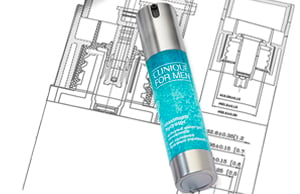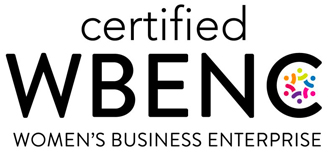
The cosmetics industry faces growing pressure to adopt sustainable
packaging solutions due to consumer demand, environmental concerns, and
impending regulations. This white paper explores innovative materials for
sustainable cosmetic packaging, highlights the benefits and challenges of
these materials, and examines forthcoming regulatory changes that will
shape the industry's future.

The cosmetics industry faces growing pressure to adopt sustainable packaging
solutions due to consumer demand, environmental concerns, and impending
regulations. This white paper explores innovative materials for sustainable cosmetic packaging, highlights the benefits and challenges of these materials, and examines forthcoming regulatory changes that will shape the industry's future.
 Introduction
Introduction
Sustainability has become a critical concern for the cosmetics industry. Packaging, which often involves single-use plastics, contributes significantly to environmental pollution. This paper aims to provide insights into:- Emerging sustainable materials for cosmetic packaging.
- Key benefits and challenges of adopting these materials.
- Anticipated global regulations influencing the industry's trajectory.
EMERGING SUSTAINABLE MATERIALS
 |
Bioplastics
|
 |
Recycled Plastics (PCR)
|
 |
Glass
|
 |
Paper-Based Packaging
|
 |
Metal
|
 |
Compostable Materials
|
BENEFITS OF SUSTAINABLE PACKAGING
Environmental Impact- Reduces plastic waste and greenhouse gas emissions.
- Encourages circular economy practices.
- Enhances brand reputation and consumer loyalty.
- Aligns with consumer preferences for eco-friendly products.
- Future-proofs businesses against stricter environmental regulations.
CHALLENGES AND SOLUTIONS
 |
 |
 |
Cost Implications
|
Recycling Infrastructure
|
Consumer Behavior
|
REGULATORY LANDSCAPE
Current Regulations
- European Union: Single-use Plastics Directive, Extended Producer Responsibility (EPR) schemes.
- United States: State-level bans on certain plastics (e.g., California, New York).
Forthcoming Regulations
- Global Plastics Treaty: Aiming for legally binding agreements on plastic pollution.
- EPR Expansion: Broader obligations for producers to manage post-consumer waste.
- Carbon Taxes: Potential taxation on packaging with high carbon footprints.
Voluntary Initiatives
- Ellen MacArthur Foundation: Commitment to a circular economy.
- SPICE (Sustainable Packaging Initiative for Cosmetics): Industry collaboration for sustainability.
FUTURE TRENDS AND INNOVATIONS

Smart Packaging
- Integrating QR codes to educate consumers on recycling.
- Tracking lifecycle through blockchain technology.
- The Future is Now: What is Smart Packaging? Read Blog

Material Innovations
- Bioengineered materials like mycelium and seaweedbased films.
- Nanotechnology for improved barrier properties.

Refillable Systems
- Encouraging consumers to reuse packaging through instore or at-home refill systems.
CASE STUDIES
 |
 |
| L'Oréal: Implemented a sustainability program focusing on reducing packaging weight and introducing ecodesigned packaging. Their goal is to reduce their packaging used by 20% by 2030 compared to 2019. As an example, Lancôme reduced the weight of the glass in its Renergie jar by 31%. |
Rituals: Offers refillable solutions across various product lines, reducing plastic consumption by 70%. |
CONCLUSION
The transition to sustainable cosmetic packaging is both a challenge and an
opportunity. By adopting innovative materials and preparing for regulatory
changes, the cosmetics industry can lead the way in reducing environmental
impact while meeting consumer expectations. Collaboration among
stakeholders—including brands, suppliers, and regulators—will be crucial in
driving this transformation.
Schedule a discussion with the APC Packaging team on how your brand can
align their sustainability goals in terms of packaging by contacting the team at
954-978-4567 or apcpackaging.com/contact.
Footnotes
1.European Commission. "Single-Use Plastics Directive." Accessed January 2025.
2.Ellen MacArthur Foundation. "The New Plastics Economy." Accessed January 2025.
3.Sustainable Packaging Initiative for Cosmetics (SPICE). "Guidelines for Sustainable Packaging." Accessed January 2025.









